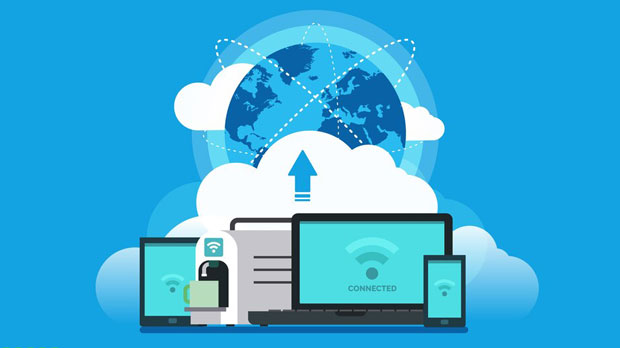When it comes to internet privacy and data protection, HTTPS encryption plays a crucial role in securing communication between the user and the server. However, this encryption can pose challenges for using datacenter proxies effectively. Datacenter proxies, often used for a variety of purposes such as web scraping, accessing geo-blocked content, or maintaining anonymity online, can sometimes be detected even when HTTPS encryption is in place. This article explores the potential vulnerabilities and detection risks of datacenter proxies under HTTPS encrypted traffic, providing a clear understanding of how they function and whether they are easily traceable. Understanding HTTPS Encryption and Its Role in PrivacyHTTPS (Hypertext Transfer Protocol Secure) encrypts the data exchanged between a web browser and a server, ensuring that information like login credentials, payment details, and browsing activities remain private. It uses SSL/TLS protocols to encrypt the connection, which means that third parties cannot easily intercept or manipulate the data being transferred. This encryption makes it significantly more difficult for entities like hackers or even certain proxy detection systems to analyze the traffic.However, while HTTPS protects the integrity and confidentiality of the data, it does not inherently hide the origin of the traffic. This is where datacenter proxies come into play. These proxies route user requests through third-party servers, masking the user's real IP address. While this technique provides anonymity, it also introduces the potential for detection, especially when HTTPS is used.The Role of Datacenter Proxies in Online PrivacyDatacenter proxies are typically provided by data centers that own large pools of IP addresses. Unlike residential proxies, which route traffic through actual users' devices, datacenter proxies use IP addresses from data centers. This means they can offer faster and more stable connections, but they are often easier to detect due to the nature of their IP addresses.For businesses and individuals who need to perform tasks like web scraping, competitive analysis, or accessing region-restricted content, datacenter proxies offer a practical solution. They are also commonly used for testing websites across different locations, without exposing the user's real IP address. However, their usage is not without risks, especially when HTTPS encryption is in place.How Datacenter Proxies Can Be Detected Under HTTPSDespite the encryption provided by HTTPS, datacenter proxies can still be detected through several methods:1. IP Address Reputation: Datacenter proxies often use IPs from known data centers, which can be flagged by websites or services that maintain lists of such IPs. These IPs are typically not associated with residential users, and as a result, they can be easily identified as proxies. Advanced proxy detection systems can detect these IPs by comparing them to known databases of datacenter IP ranges.2. Traffic Patterns: Even though the traffic is encrypted, certain patterns in how the traffic behaves can signal the use of a proxy. For example, if a large number of requests originate from a single IP address or from IPs with a common data center origin, it could raise suspicions. Additionally, the timing and frequency of requests can be used to identify abnormal patterns typical of automated systems using proxies.3. TLS Fingerprinting: Even within HTTPS encrypted traffic, certain characteristics of the TLS handshake can be used to detect datacenter proxies. This technique, known as TLS fingerprinting, analyzes the unique attributes of the TLS connection, such as the cipher suites used and the order in which they are negotiated. Datacenter proxies often exhibit distinctive TLS fingerprints that differ from those of regular residential connections, making them identifiable.4. Behavioral Analysis: Websites may also track the behavior of a user’s session, looking for anomalies that suggest the use of a proxy. For example, if a user from an unusual location suddenly accesses a website and behaves like a bot (rapid clicks, high request frequency), it could signal that a proxy is being used. Though this may not be directly related to HTTPS encryption, it is still a factor in the overall detection process.Challenges for Detection SystemsAlthough detection systems have become more advanced, there are still significant challenges in reliably detecting datacenter proxies under HTTPS traffic. The use of HTTPS encryption means that the content of the data is hidden, which prevents systems from inspecting the traffic for typical signs of proxy usage, such as headers or DNS queries.Furthermore, the development of more sophisticated proxies, such as rotating ip proxies or those with enhanced fingerprint masking, has made detection even more difficult. These advanced systems change IP addresses frequently and attempt to mimic regular user behavior, making it harder for detection systems to flag them as proxies.How to Minimize Detection RisksTo reduce the risk of being detected when using datacenter proxies under HTTPS encrypted traffic, there are several strategies that can be employed:1. IP Rotation: By frequently changing the IP address used by the proxy, users can avoid the detection of a static IP address from a datacenter. This makes it harder for websites to track unusual traffic patterns or flag the IP as a proxy.2. Residential Proxies: While more expensive, residential proxies are more difficult to detect because they use IPs that belong to actual users. These proxies are less likely to be flagged as they appear to be normal residential connections, even under HTTPS encryption.3. Using Proxy Networks with Masking Techniques: Some proxy providers use advanced techniques such as fingerprint masking, which makes their proxies appear more like regular user connections. This can involve randomizing certain connection parameters, such as the TLS handshake details, to avoid detection.4. Monitor Proxy Usage: Regularly checking the success rate of proxy connections can help in identifying and avoiding detection. If a proxy is being flagged frequently, it may be necessary to switch to a different proxy or provider.In conclusion, while HTTPS encryption provides a high level of security and privacy for online communications, it does not guarantee complete anonymity when using datacenter proxies. Detection systems are becoming increasingly sophisticated, able to spot the use of datacenter proxies through methods like IP reputation checks, traffic pattern analysis, and TLS fingerprinting. However, with careful strategy, such as rotating IPs, using residential proxies, and employing masking techniques, it is still possible to mitigate the risks of detection. Understanding these risks and how to manage them is crucial for anyone using datacenter proxies in a world where online privacy is increasingly under scrutiny.
Sep 02, 2025



































































